A Primer on the Tanto and Jinen Ryu Tantojutsu
Visit the Jinenkan Webstore to purchase the Jinen Ryu Tantojutsu DVD set!
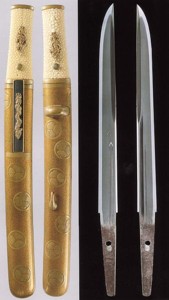 Classical Japanese martial arts are famous for the variety of, and high level of skill refinement in, traditional weapons of the culture. The knife or dagger known as the tanto, however, occupies an unusual niche in the arsenal. Though it is well known in martial arts, very little of it’s accompanying fighting techniques, referred to as tantojutsu, have either survived or been propagated. The founder of the Jinenkan, Manaka Sensei, learnt the combative use of the tanto from Hatsumi Sensei and through his own experience, but not a curriculum of kata (forms) he could use to teach. Therefore, through experimenting and research he created such a curriculum for his own ryu-ha, and founded Jinen Ryu Tantojutsu. This article will attempt to explain the characteristics of this weapon, and how it is practiced in our organization. Classical Japanese martial arts are famous for the variety of, and high level of skill refinement in, traditional weapons of the culture. The knife or dagger known as the tanto, however, occupies an unusual niche in the arsenal. Though it is well known in martial arts, very little of it’s accompanying fighting techniques, referred to as tantojutsu, have either survived or been propagated. The founder of the Jinenkan, Manaka Sensei, learnt the combative use of the tanto from Hatsumi Sensei and through his own experience, but not a curriculum of kata (forms) he could use to teach. Therefore, through experimenting and research he created such a curriculum for his own ryu-ha, and founded Jinen Ryu Tantojutsu. This article will attempt to explain the characteristics of this weapon, and how it is practiced in our organization.
Bladed weapons are among the most famous Japanese martial weapons, including the yari (the spear which is symbolically linked to the creation of the island nation), the naginata (a halberd often ascribed to female warriors), and of course the katana, wakizashi and tachi- swords which are boundlessly depicted as the symbols of the bushi or warrior class.
Knives do not seem as frequently depicted, but were certainly present in wide variety. Known by many names (from the yoroidoshi armor-piercing dagger to the small kaiken commonly associated with women) and bearing many designs, they are collectively referred to as tanto. They ranged from being very plain and utilitarian, to commanding as much attention and care in manufacture as the swords they accompanied. The characters comprising the name are, respectively, the kanji for “short” and “sword”, affirming their close relation to swords. The typical tanto blade design resembles the larger swords: it is single-edged, with the blade curving up towards the point. Double-edged tanto are not unknown: often they were re-mounted spear blades, just as sometimes single-edged tanto were created from broken swords. A tanto may vary greatly in length: one range given is 15-30 cm (6-12 inches), which approaches and blurs the line between tanto and kodachi (short sword). Some bear a tsuba (guard) similar to a sword, and possibly as ornate; others have no guard, and the hilt simply meets the mouth of the scabbard when sheathed (as seen in the aikuchi).
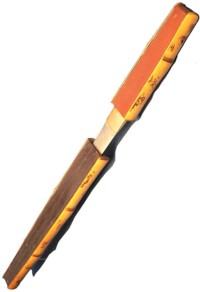 During the Warring States period prior to the 17th century, the tanto was often the backup weapon to the longer sword – the tachi – on the battlefield. In an agrarian and medieval culture such as feudal period Japan, they were probably more than a fighting weapon or symbol of authority: a knife would have been a tool for everyday chores. It could be carried everywhere, even indoors where a sword would be inappropriate or even cumbersome. Many smaller tanto were carried by women, tucked into the obi (sash) where it would be out of the way but readily drawn when needed. Even beyond the warrior class, the laboring classes would have needed them for mundane tasks; despite the prohibitions on weapons, it would have been impossible to remove the need for cutting implements, and therefore knives themselves. For the laborer, a common method of carry would have been inside the jacket, in front the abdomen, where it would have been ready but concealed. Some tanto were concealed by design inside sheaths resembling everyday items such as fans or walking sticks. During the Warring States period prior to the 17th century, the tanto was often the backup weapon to the longer sword – the tachi – on the battlefield. In an agrarian and medieval culture such as feudal period Japan, they were probably more than a fighting weapon or symbol of authority: a knife would have been a tool for everyday chores. It could be carried everywhere, even indoors where a sword would be inappropriate or even cumbersome. Many smaller tanto were carried by women, tucked into the obi (sash) where it would be out of the way but readily drawn when needed. Even beyond the warrior class, the laboring classes would have needed them for mundane tasks; despite the prohibitions on weapons, it would have been impossible to remove the need for cutting implements, and therefore knives themselves. For the laborer, a common method of carry would have been inside the jacket, in front the abdomen, where it would have been ready but concealed. Some tanto were concealed by design inside sheaths resembling everyday items such as fans or walking sticks.
Despite their non-exclusive past, they are perhaps the most successful survivor of Japanese weapons. Various characteristics of tanto have been studied and reproduced by modern knifemakers and blade-making companies seeking utilitarian tools. The classical blade design is excellent for stabbing and penetrating; a modern twist is to make the blade more linear and geometric, resembling a chisel rather than sweeping up towards the point. The spine is often thickened for reinforcement. In addition, the hilt, scabbard and blade itself are frequently made of the most modern materials, and the overall design emphasizes these functional innovations, rather than tradition.
By contrast, the traditional fighting styles associated with this weapon don’t appear to have fared as well; they are only infrequently encountered. The one book I encountered dedicated to the subject, Russell Maynard’s “Tanto: Japanese Knives and Knife Fighting”, was published in 1986 and not followed by others: though it has considerable historical information, it does not mention by name the ryu-ha it depicts. There is historical evidence that it was a weapon of last resort, or when the wielder did not care for their own life: Manaka Sensei has commented that as recently as in the lead-up to the Second World War, it was not unknown for a young officer, wielding a dagger, to sacrifice his life by assassinating politicians believed to be disloyal. Also, there is the fact that both men and women of the warrior class would use the tanto to commit seppuku (formal suicide) in order not to suffer disgrace or be captured by an enemy. In both these historical examples, the resolve of the wielder is what is expressed, not technique.
When Manaka Sensei created the Jinen Ryu, he faced the challenge of understanding the principles of the weapon, but needing a syllabus of formal kata to teach from. Realizing that moving the whole body, and not focusing solely on the knife, was the key, he drew on Koto Ryu Koppojutsu and Gyokko Ryu Kosshijutsu (in which he has menkyo-kaiden license) for the body movement. Striking with the knife involves essentially the same movements as unarmed strikes. Manaka Sensei placed the highest importance on muto (“no sword”); since using a short knife to intercept an opponent’s weapon is almost impossible, moving the body as if unarmed is a better approach. The result is Jinen Ryu Tantojutsu.
The Tantojutsu is organized into Kamae, Kihon Gata, and Sabaki Gata. The Kamae, or “stances”, include not only the physical postures, but also ways of gripping the knife, as well as the attitude or psychological component. There are seven Kamae.
The Kihon Gata are the “basic forms”, and include methods of thrusting and cutting, as well as moving. It is important not to become fixated on the knife, and only rely on putting power into the knife-bearing arm; rather, the Kihon Gata trains you to respond to various attacks from each Kamae. There are five scenarios for each Kamae in the Kihon Gata. It is here the essence of Tantojutsu reveals itself: instead of the training partner wielding a similar knife, he wields a sword. Small movements or resisting by using your own knife will not suffice. You must move decisively, and rely on your body movements for power. This approach helps connect the knife to the student’s footwork, incorporating the two from the outset of training. In addition, the knife is not your only option: you still have one free hand with which to trap, seize or control the opponent. By arming the partner with a sword, this training method also underscores a critical point: this is not dueling, where the opponents are roughly equal. You are immediately outmatched, and must rely on developing solid technique.
The final level of training is the Sabaki Gata. These are the “forms for performing skillfully”. Having practiced many kinds of body movements in the previous level, these more advanced forms focus on application. There are three kata for every Kamae, for a total of 21 kata. An important point is that each set of kata emphasizes different kinds of grips; this changes the striking and controlling options available. The training partner may be armed with a sword or a knife. This drastically changes the range, and also the options open for both partners. Also, there are more advanced options for both striking the opponent with your other limbs, and for controlling the opponent by locking, throwing, or otherwise suppressing them. This bears careful study, as it includes the possibility of subduing an adversary without actually killing them. In certain kata, the knife is used at the end of the technique to finish the opponent; this can be omitted if it is unnecessary. Finally, this presents the possibility of using tantojutsu when you are not actually armed with a knife: a variety of short, similar items could be substituted.
I believe this final point is worth concluding on: the functional value of tantojutsu. Despite the attention paid to swords and other weapons, it is the tanto and its design characteristics that have propagated in the modern period. Knives have been, and remain, extremely useful, adaptable and common. However, this is not an endorsement of carrying a knife for self-defense. As Manaka Sensei has demonstrated, moving your body as if you are not armed is the core of these teachings. Therefore, the knife can be replaced. In addition, Jinen Ryu Tantojutsu does not present the knife as a weapon of assassination; instead, the opponent is depicted as aware, menacing, and better armed. The tanto is not a replacement for your technique; it is an extension of the body protecting itself in a moment of dire need.
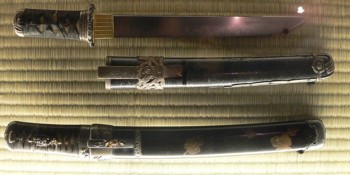
References:
Manaka Unsui Sensei’s monthly articles on the Jinen Ryu densho.
Maynard, Russell, “Tanto: Japanese Knives and Knife Fighting”, Unique Publications, Burbank CA, 1986.
|
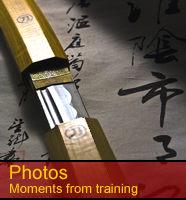


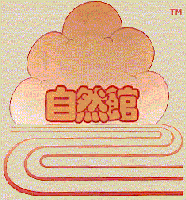
|
|
|